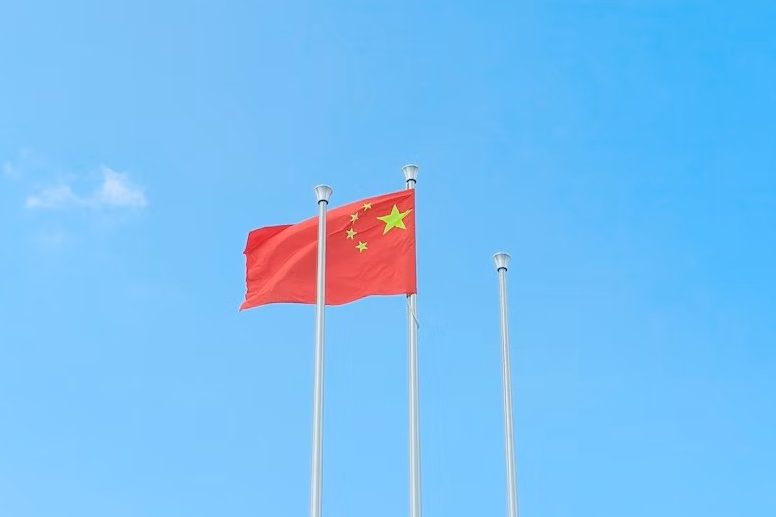The South China Sea
Gray Zone Operations and International Law Intertwined in a Battle of Narratives
In December 2024, the Philippines’ new navy chief suggested that the Philippines’ military could adopt its own “gray zone” operations in the South China Sea (SCS) to counter those used by the People’s Republic of China (PRC). This statement came in response to an incident in which the Chinese Coast Guard (CCG) fired water cannons and blocked a Philippine patrol vessel on December 4th. At the bottom of the dispute lie the claims by the PRC and the Philippines that they possess sovereign rights over disputed territories in the SCS. Neither party is willing to compromise on their claim, but at the same time, neither is willing to escalate the conflict to such an extent that it would reach any relevant threshold in international law. This is where gray zone operations come into play.
The present blog post will first dive into what gray zone operations are and then showcase the role and positions of both the Philippines and the PRC regarding the SCS to unfold the two sides of the gray zone in the SCS. Thereafter, the role of international law regarding the gray zone and possible solutions will be discussed.
What Are Gray Zone Operations?
Gray zone operations refer to situations in which states deliberately attempt to influence the legal assessment of their actions by either using lacunae in international law or the wide array of possible interpretations of legal rules. While the gray zone itself is not a legal concept, it creates a multitude of legal implications and poses a challenge as to what the applicable law in highly contentious cases is. Problems arise when a state uses this lack of clarity regarding the legal situation to advance its own goals, while the international community is unable to judge the nature of the actions and respond to them. Thus, gray zone operations work by creating (legal) uncertainties or treating a legally uncertain situation as certain, to then use this certainty as the basis for further claims. Gray zone activities do not usually violate international law, but they do exploit and create legal ambiguity. While they may not always be a malign factor, their use often poses a challenge to international law, especially when the purpose they serve may violate or instrumentalize international law.
The Position of the PRC
The PRC uses the so-called nine-dash line to lay out its territorial claims in the South China Sea. This is backed by historical facts, such as the discovery and occupation by the PRC early on and the continuous assertion of maritime rights in the region since 1947, as well as historical claims tracing back to the Han dynasty (206 BC to 220 AD). Thus, the PRC follows a legitimation and assurance policy regarding the SCS dispute by creating a meaning for their state’s behavior and invoking legal norms.
While this law-abiding narrative may become untrustworthy if the PRC were to violate international law, it simultaneously creates a basis for argumentation on the international plane. Starting in the 2010s, the PRC’s behavior became more assertive in enforcing sovereignty claims in the SCS, i.e., by employing maritime law enforcement vessels in the SCS. Further, the PRC has been continuously discrediting the Ruling in the South China Sea Arbitration Case and did not participate in the proceedings, stating that there was a lack of jurisdiction as territorial issues are not within the scope of UNCLOS.
Different branches of the Chinese government have also used domestic law to put maritime claims into context. As China’s domestic legal terminology does not align with that of international law, it creates different thresholds and standards and allows the PRC to remain ambiguous about some of the boundaries of its maritime claims. This position stands in stark contrast to that of the Philippines.
The Position of the Philippines
The Philippines has followed a legal-based legitimacy strategy by depicting the PRC as a hegemon bullying a weaker state. Concerning the PRC’s historical claim, the Philippines argue that first, international law did not historically permit the type of expansive claim advanced by the PRC’s nine-dash-line and, even if the PRC were to possess historic rights in the South China Sea, any such rights were extinguished by adopting the United Nations Convention on the Law of the Sea (UNCLOS). This coincides with the 2016 arbitral award finding no basis under international law for China’s specific claim to sovereign rights encompassed by the so-called ‘nine-dash line’. Second, they argue that the PRC cannot meet the criteria for establishing historic rights within the nine-dash line. The Philippines bases its own territorial claims on UNCLOS, as the waters, seabed, and subsoil of the SCS within 200 M of the Philippines’ coast constitute the Philippines’ exclusive economic zone (EEZ).
The Philippines has been holding joint military exercises with its partners, e.g., the USA and Japan, and making statements about which actions would cross a line to assert its position. Moreover, it has started a transparency initiative to expose China’s actions in the SCS and to debunk Beijing’s narrative portraying itself as a responsible great power and the SCS as a waterway where territorial disputes can be managed directly between concerned parties. The initiative was able to rally international sympathy and domestic support. It has, however, not stopped gray zone operations in the SCC from happening.
The Two Sides of the Gray Zone
When comparing the two positions, the issue at the heart of the conflict in the SCS becomes clear: it lies in the differing views on the factual background for the territorial claims. While gray zone operations come into play when there’s an unclear legal situation, the situation in the SCS is even more complicated as neither the legal thresholds for operations, such as using paramilitary vessels, are clear, nor do the conflict parties agree on the factual basis to which international law is supposed to be applied to. While this is not unusual in international law, it does complicate the assessment of gray zone operations within the SCS because both the factual and legal claims are, to a certain extent, a question of narrative. It is thus necessary to differentiate between the gray zone operations themselves and the legal claims behind them, while still considering the legal issue in light of the underlying political context, as has also been done by the ICJ in the Tehran Hostages case (para. 37).
The operations themselves, such as paramilitary activities in the SCS, don’t reach any relevant threshold of international law. The issue, thus, lies in the absence of an effective framework applicable to them. While ignoring them in order not to escalate the situation may be a viable tactic, this also comes with risks, as it will lead to further blurring the line between acceptable and unacceptable claims and conduct in the SCS. A new legal framework could be the solution, categorizing gray zone operations, but until then, general international law applies, and adherence to its fundamental principles, especially the non-use of force and non-intervention, remains binding.
At the same time, as long as the legal claims behind the operations remain, neither the conflict nor the gray zone operations will cease. Regarding the conflict in the SCS, the set of facts presented by both the PRC and the Philippines is drastically different. This starts with the historical claims to the South China Sea. While the PRC argues that international maritime law should not only consider international laws such as UNCLOS, but also respect regional traditions and customs, the Philippines regards UNCLOS as the relevant determinant. While the Philippines agrees with the status quo, the PRC argues that the status quo does not represent its actual territorial rights. These differences are also not being helped by treaties such as UNCLOS, because these rely on facts to legally classify territory. By shaping their own narratives within both domestic and foreign policies, each state has created its own set of facts. It is then not surprising that gray zone operations based on these narratives are seen as malign by the Philippines, but as a legal method to advance their claims by the PRC.
This becomes especially problematic when the factual narrative itself becomes part of the gray zone operations, such as argued for the nine-dash line, which constitutes both a historic claim but also creates legal ambiguity because of its unaccountability. Both the factual and legal ambiguity are what lead to the difficulty of responding to the gray zone in the SCS.
Different solutions have been proposed regarding how the Philippines and the US could respond to some of the gray zone operations used by the PRC. For one, as proposed by the Philippines Navy chief, one could counter gray zone operations by using gray zone operations, which may aid in putting a halt to any advances on both sides. This will, however, neither solve the underlying problem of the conflict nor help in creating more instead of less legal clarity. A different approach would be to agree upon a clear legal concept of gray zone operations, recognizing certain gray zone operations as forms of aggression in order to delegitimize them. As discussed above, the nature of gray zone operations is to use the ambiguity of international law; thus, filling in the legal gaps could be a solution, thereby diminishing legal ambiguity. As has been proposed, even coordination by some states and taking a joint legal stance could help reduce the effect of gray zone operations. This is what the Philippines has, in fact, focused on with its ‘transparency strategy’ and cooperation with many Asian partners and the US.
While this may have had some effect, cooperation on one side of the conflict cannot solve the entire underlying disagreement of facts between the two disagreeing sides.
Any one-sided solution, while more feasible, seems to give more reason to further gray zone operations, rather than putting them to a halt. If the underlying facts are not agreed upon, international law will remain ambiguous in that it can only be applied to one of the underlying sets of facts.
Conclusion
When it comes to the issue of the gray zone, the core issue for international law is in fact not the gray zone operations themselves but rather the conflicts they’re able to escalate. Legal ambiguity and the gray zone that comes with it are not new and will likely always exist. While it may still be a viable solution to try and create international law for these legal lacunae, an agreement on the underlying facts will continue to be needed as well, because gray zones often lack not only legal rules, but also universally acknowledged facts to base law on. Thus, the more disputed the facts are, the less consensus there can be on how international law is to be applied. The current tensions and claims in the SCS and the use of grey zone tactics in the midst of uncertain applicable rules highlight this difficulty of solving legal disputes in the absence of factual agreement by states.
The “Bofaxe” series appears as part of a collaboration between the IFHV and Völkerrechtsblog.

Leona Wittig is a law student at Ludwig-Maximilians-Universität Munich, where she specializes in Public International Law and European Law.
